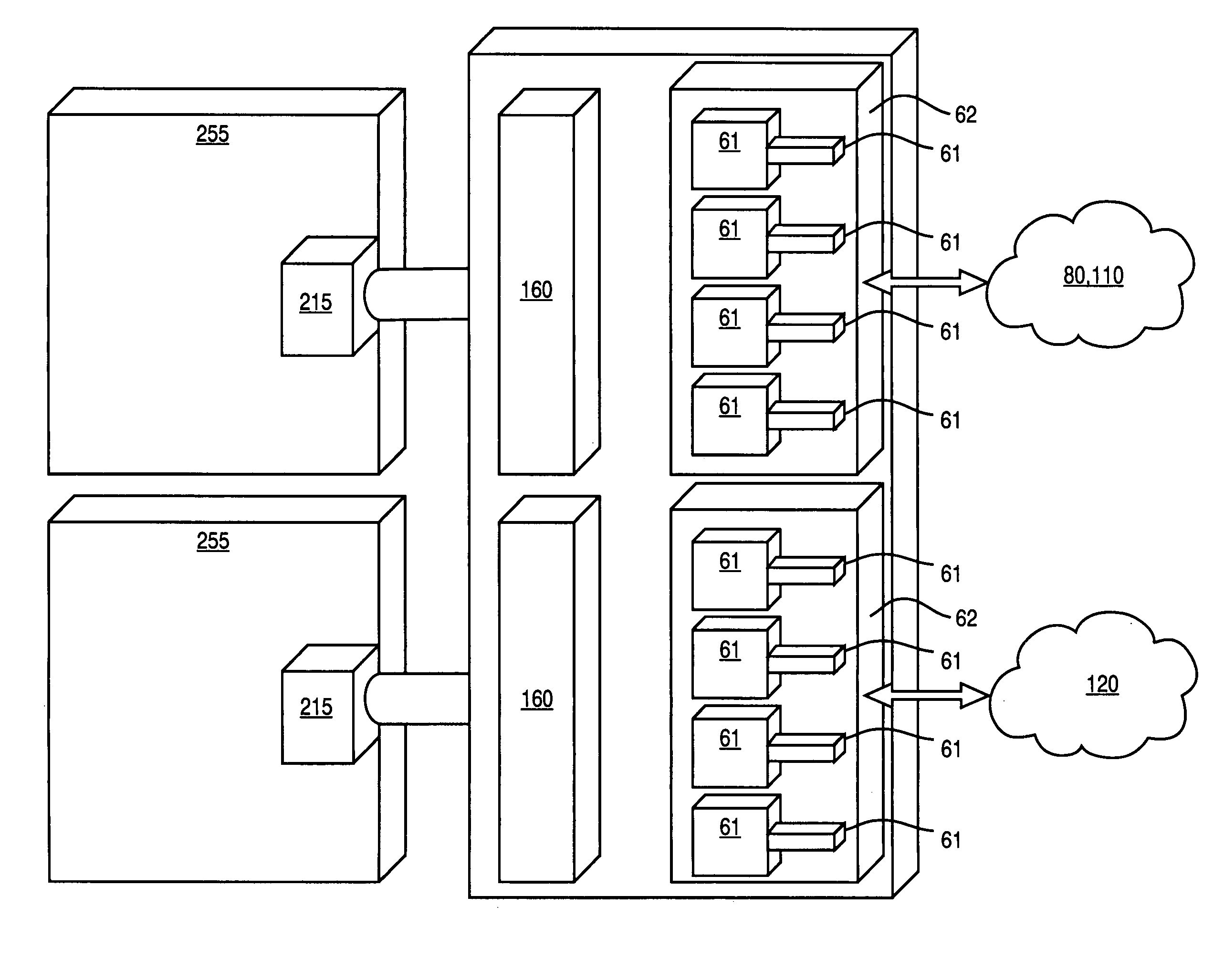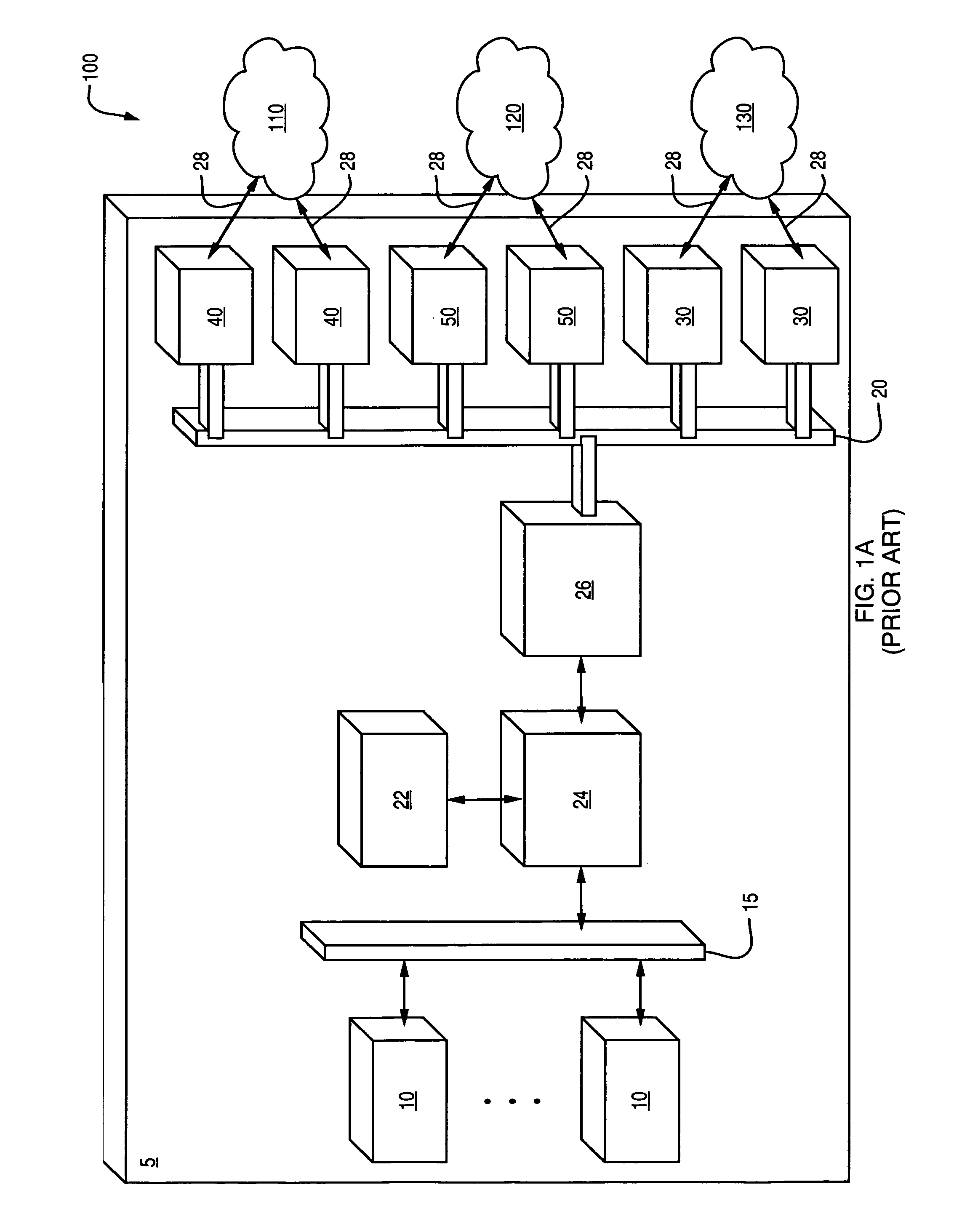System and method for implementing logical switches in a network system
a network system and logical switch technology, applied in the field of computer network systems, can solve the problems of inability to meet the demands of today's enterprises, the inherent limitation of the pci system discussed above, and the inability to change the pci system architecture at the same pa
- Summary
- Abstract
- Description
- Claims
- Application Information
AI Technical Summary
Benefits of technology
Problems solved by technology
Method used
Image
Examples
Embodiment Construction
[0043]Reference will now be made in detail to the preferred embodiments of the present invention, examples of which are illustrated in the accompanying drawings. Wherever possible, the same reference numbers will be used throughout the drawings to refer to the same or like parts and steps.
[0044]As shown in FIG. 1A, in a traditional (prior art) network system 100, a server 5 generally contains many components. These components, however, can logically be grouped into a few simple categories. As shown in the diagram, server 5 contains one or more CPUs 10, main memory 22, memory bridge 24, and I / O bridge 26. Server 5 communicates to networks such as Ethernet 110, Fibre Channel SAN 120, and IPC Network 130 through NICs 40, Fibre Channel Host Bus Adapters (HBAs) 50, and IPC adapters 30, respectively. These adapters or network cards (i.e., NICs 40, HBAs 50, or IPC adapters 30) are installed in server 5 and provide connectivity from the host CPUs 10 to networks 110, 120, 130.
[0045]As shown,...
PUM
 Login to View More
Login to View More Abstract
Description
Claims
Application Information
 Login to View More
Login to View More - R&D
- Intellectual Property
- Life Sciences
- Materials
- Tech Scout
- Unparalleled Data Quality
- Higher Quality Content
- 60% Fewer Hallucinations
Browse by: Latest US Patents, China's latest patents, Technical Efficacy Thesaurus, Application Domain, Technology Topic, Popular Technical Reports.
© 2025 PatSnap. All rights reserved.Legal|Privacy policy|Modern Slavery Act Transparency Statement|Sitemap|About US| Contact US: help@patsnap.com



